Unforgotten Brands – Hamam Soap

Hamam became a symbol of national pride and technological progress. Many adults remember using this soap as kids because it was such a welcome alternative to expensive foreign brands.
Archives reveal that Jamsetji Tata began processing seeds for oil at an experimental facility he had established in Bombay. The concept originated during World War I. Burjorji Padshah, a close associate of Jamsetji’s, took a voyage from the United States to Japan around that time. There, he met a fellow tourist called Edward Thompson, who was interested in establishing a vegetable oil business in India.
Padshah encouraged Thompson to discuss his ideas with Tata. Thompson described his travels across southern India to Tata in a letter, where he discovered a plethora of copra. The United States economy relied heavily on Indian copra. He said, “India should crush the copra, export the oil, and use the coconut cakes as cattle feed rather than sending the copra to the United States.”
In Kochi, the Tatas acquired OK Mills and founded TOMCO. The corporation had significant losses at the outset. Soap production followed in 1917. The business made history by producing scented soaps in South India.
In the field of chemistry, Dr Shamrao Annaji Kamat earned his PhD from Berlin University. He spent some time as a chemist in Germany’s fast-moving consumer goods (FMCG) business. In 1930, Dr Kamat moved back to India. He then became the head chemist at The Tata Oil Mills in Cochin, and his expertise in the field of soap production helped the Tatas introduce India to mass-produced, all-natural soaps for the first time. When Tata Oil Mills released its innovative “Hamam” soap in 1931, it was a game-changer since it was the first Indian-made soap created with all-natural components and cutting-edge production techniques at the time. Tata previously produced laundry soap (OK brand) using inefficient and primitive cold process technology; the introduction of ‘Hamam’ was a major step forward for the company.
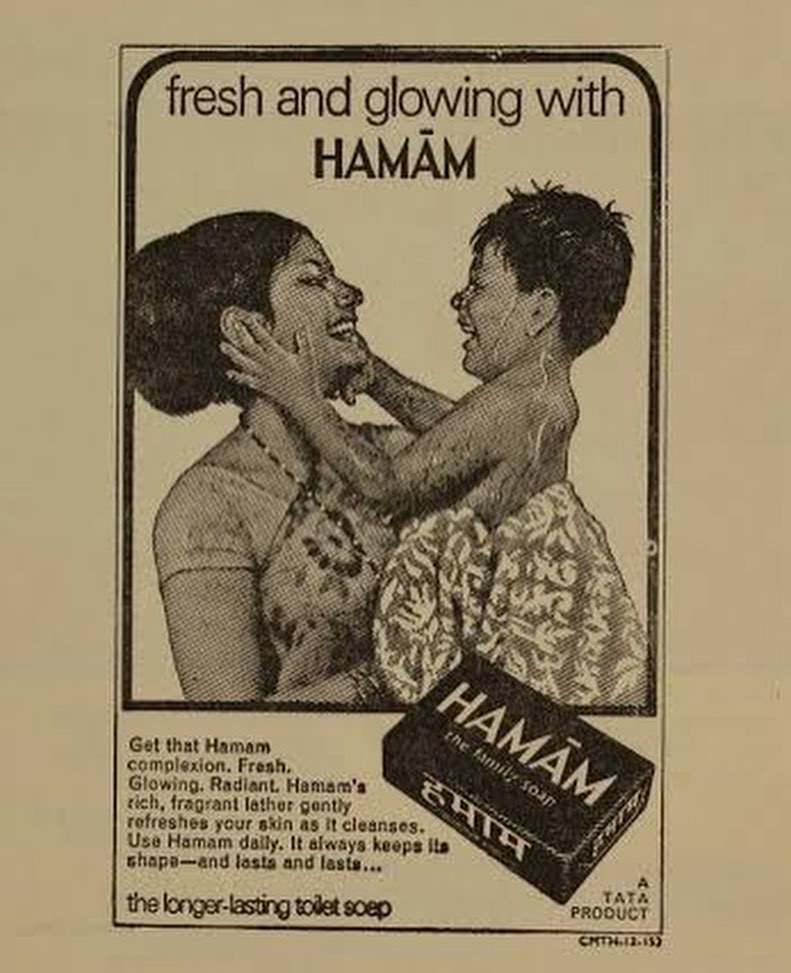
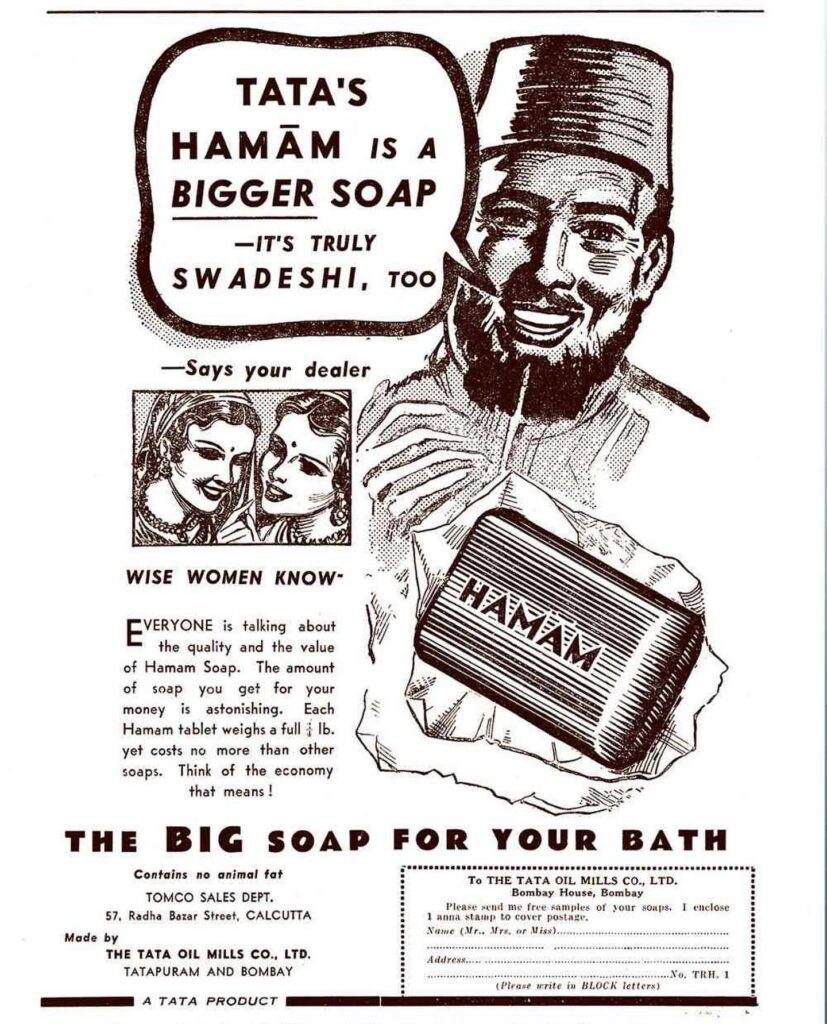
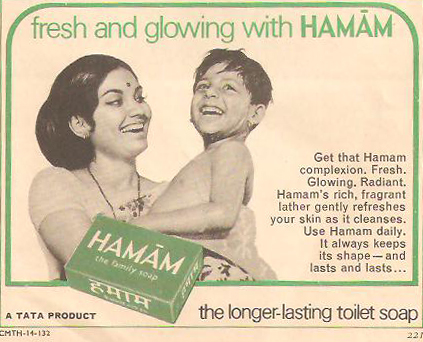
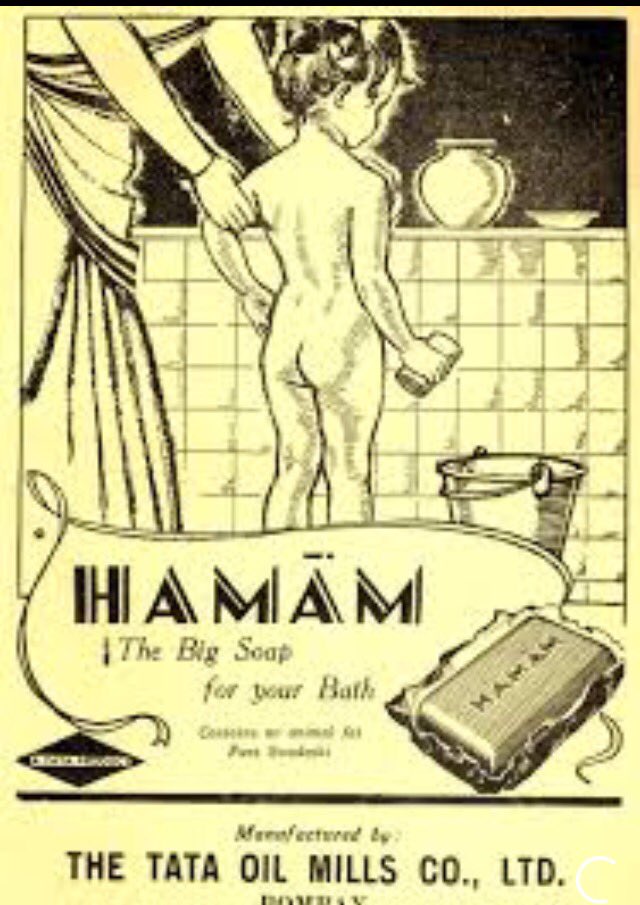
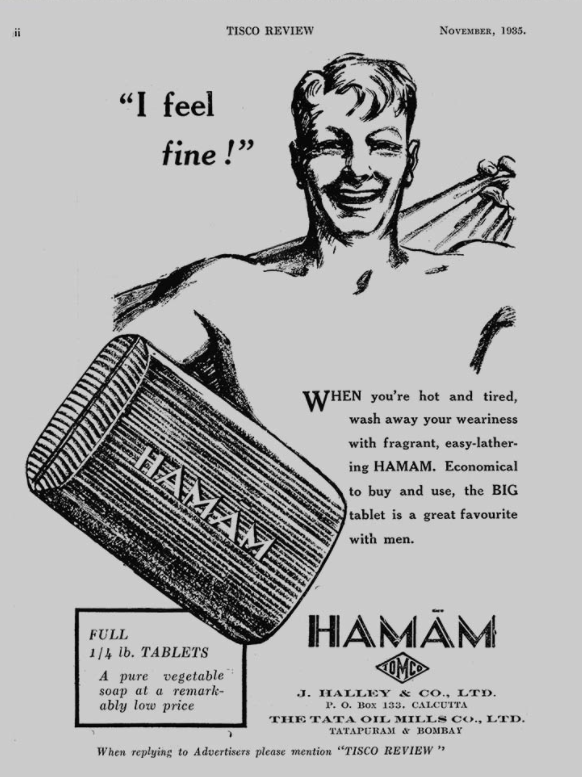

At the time, the majority of bath soaps marketed in India came from England, mostly under the Lever Brothers brand.
Hamam was the first mass-produced Swadeshi bath soap to compete with Lever. Advertising for Tata’s Hamam soap at the time boasted, “Tata’s Hamam is a bigger soap—it’s truly Swadeshi, too,” to set the brand apart from the many foreign-owned enterprises operating in India at the time. Other informed buyers that the Swadeshi Mills Co. Ltd. was founded by Jamsetji Tata in 1886, a full two decades before the Swadeshi movement came to the fore.
All TOMCO brands became part of Unilever when TOMCO was acquired.
Hamam was spared from elimination during Unilever’s implementation of the Power Brand strategy due to the brand’s high customer equity. As a result, Rexona, a natural soap in a similar position to Hamam, took the hit.
Originally, Hamam was promoted as a fully natural, multi-purpose family soap. Trust is the foundation on which the brand stood. Older advertisements often featured a mother and child, with the mother using Hamam to illustrate the concept of trust.
Hamam had its share of difficulties. Unilever had sought to market Hamam as an herbal soap by altering its composition by adding Neem components and decreasing the TFM in response to competition from herbal and ayurvedic soaps. However, Hamam’s fall in TFM caused the brand to lose a lot of its regular consumers.
Unilever revamped the product in 2005 by increasing the number of ingredients. The company is currently advertising that its product has an “optimal blend” of Neem, Tulsi, and aloe vera extracts. The soap’s form is now oval, and the packaging is sleeker and more modern. In 2006–2007, the brand’s messaging underwent a shift. The company has shifted its marketing message away from one of trust and towards one of a beauty-enhancing soap. A new formulation including green gram, turmeric, and sandalwood has been introduced by the manufacturer. Soap has gone from its characteristic green tint to a more neutral sandal tone. This shifts the brand’s long-held image away from that of an eco-friendly cleanser.
Hamam has 9–10% of India’s soap market, worth Rs 4000 crore. More than 25% of the market in Tamil Nadu is controlled by this particular brand.
Hamam has been successful for so long because of the dedication of its clientele. The company is making an effort to appeal to a new demographic of buyers (those of a younger age). There is a lot of competition for the brand since there are many others that use the same components and provide the same advantages. The purpose of the most recent repositioning effort is to maintain the brand’s viability and capitalise on the brand’s established value.



